Day 2, June 15, 2014, 18 miles backpacking the Ribdon River
One river crossing in a packraft (Ribdon)
Describing my 7 day, 170 mile wilderness backpack and packraft trip along the Ribdon, Ivishak and Sagavanirktok rivers in Alaska’s Brooks Range from June 14-20.
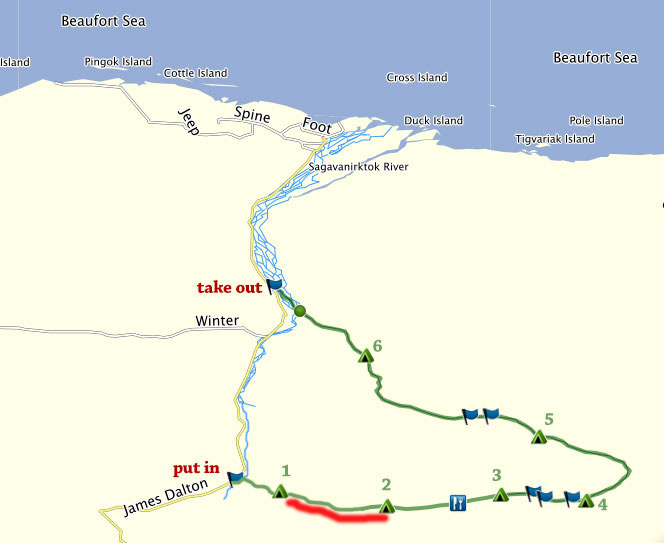
Day 2 route:
Route Map – hike up the Ribdon river valley, Packraft down the Ivishak river. 3.5 days hiking, 3.5 days on the river.
Alaska’s Mountain weather seems to change quickly and frequently. Our sunny evening the night before morphed into low lying fog in the morning as we woke to day #2, very excited to move further up the Ribdon River valley with a full day of backpacking.
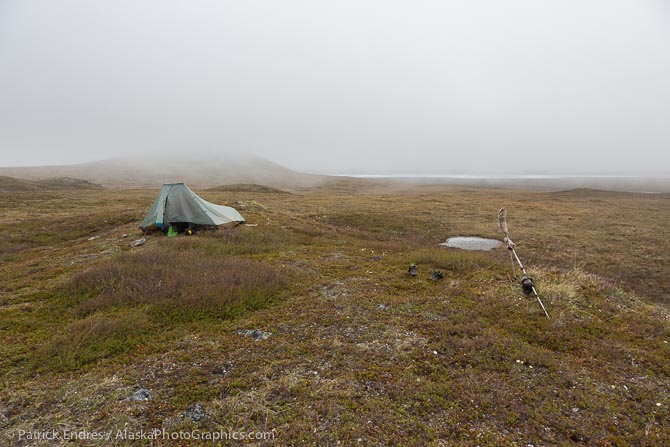
Early morning fog, which would burn off later in the day.
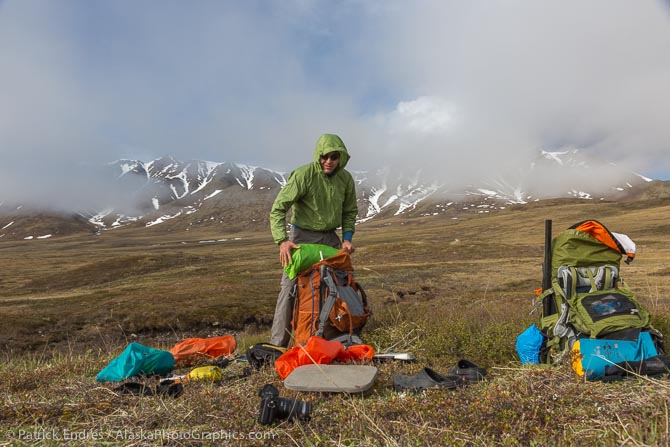
The inevitable tundra yard sale of gear prior to repacking for the day trek. Not a problem on a sunny day but when the rain comes, organization and efficiency make their mark.
Traveling fast means traveling light, but traveling in Alaska’s Brooks Range means you want everything you need with you. Mark felt a little chilly even wearing everything on that first foggy morning, but a little body motion can remedy that, and there is always the big puffy down sleeping bag within reach if necessary. “Reduction” should be followed by “Organization”, which is the second law of simplicity in The Laws of Simplicity by John Maeda. Because: “organization makes many things appear fewer”, and, knowing where your stuff is reduces frustration, increases efficiency, and saves time (which is the 3rd rule for discussion in the next post).
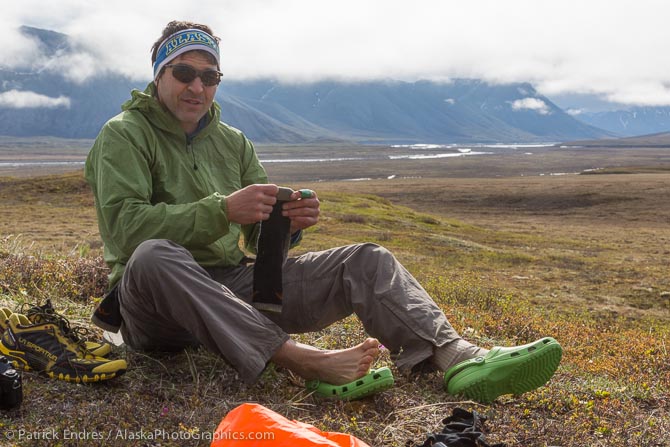
Managing wet feet from soggy tundra, snow patches and cold water river crossings becomes a challenge. I resorted to seal skin socks which would help the feet stay considerably warmer. Lightweight crocks are a great option for camp. Stylized Mark has shoes to match is wind breaker.
Instead of an external rain cover for my pack, I used a 60 liter sea to summit dry bag that went on the inside of the pack. That ensured everything would stay dry through wet conditions. After donning wet socks and shoes, we began our days trek across the spongy tundra with hiking poles, used not so much for balance but to levy the extra power of the upper body and lighten the load on the legs.
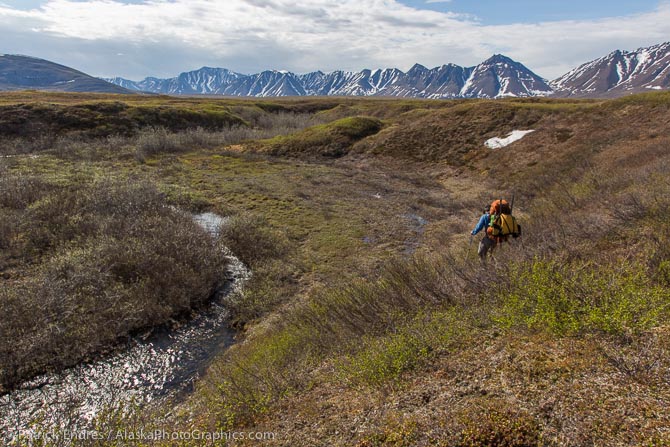
Traversing numerous small streams and willow/alder thickets was common in the first 10 miles of travel. In mid June, the brush leaves are just starting to emerge.
In the first hour, we spotted a lone grizzly bear foraging on the tundra. We snapped a few photos before the bear was aware of our presence, and like bears often–but not always–do in areas where they feel hunting pressure, it turned around and ran for a long while until it was out of sight. That is the kind of behavior I like to see with a bear sighting in the wilderness. I had pepper spray within easy reach on the side of my backpack.
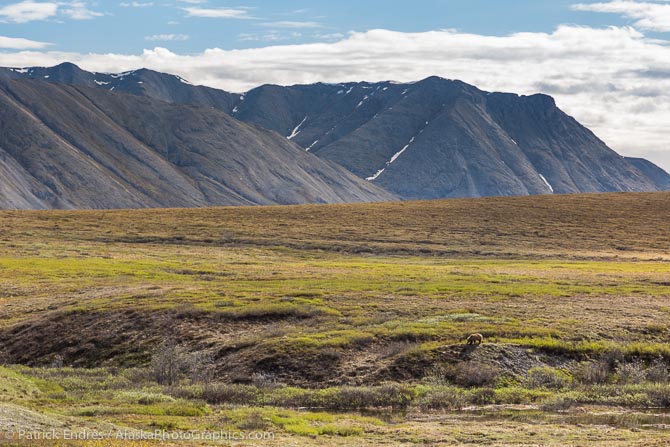
One of the impressive sensations of being in big, broad wilderness landscapes is the sense of being a minority in a land of its more regular inhabitants-the wildlife. This is the domain of the top terrestrial predator, the grizzly bear, and to encounter one in the wild evokes a true wilderness feeling. The bear took off running as soon as he scented and spotted us.
The weather morphed throughout the day from fog, to sunshine, to clouds, to rain, back to sunshine–true mountain weather. As the day progressed, we moved towards the Ribdon river bed, and decided to cross it which required blowing up the rafts since it was too deep to ford on foot. But following that for the rest of the day, it was a lot of route finding and river wading.
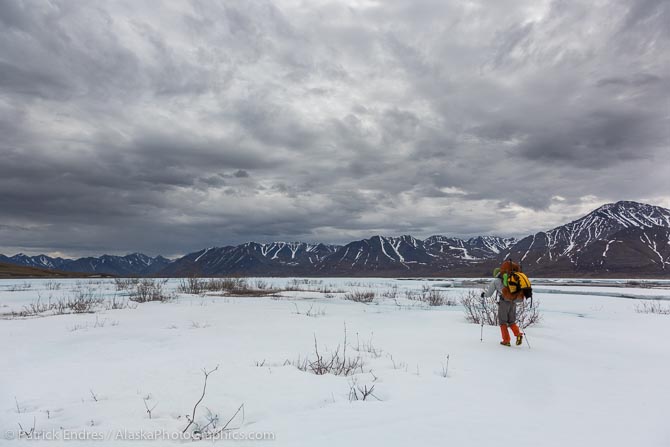
Remaining ice on the river was common in the middle section of the Ribdon river, also known as Aufeis. With a little sun rot on the ice surface, it becomes a slushy mixture for the top few inches and can be mighty cold on the feet.
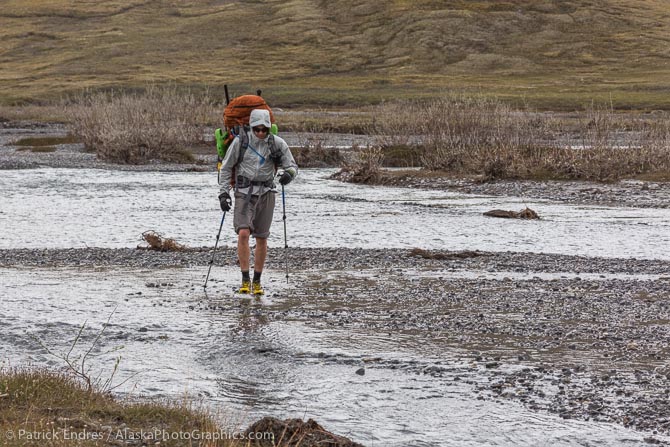
Crossing yet another part of the braided river.
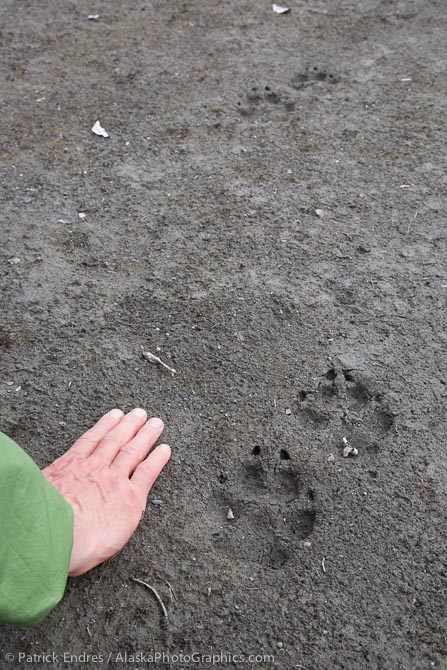
Wolf tracks were common along the river bed.
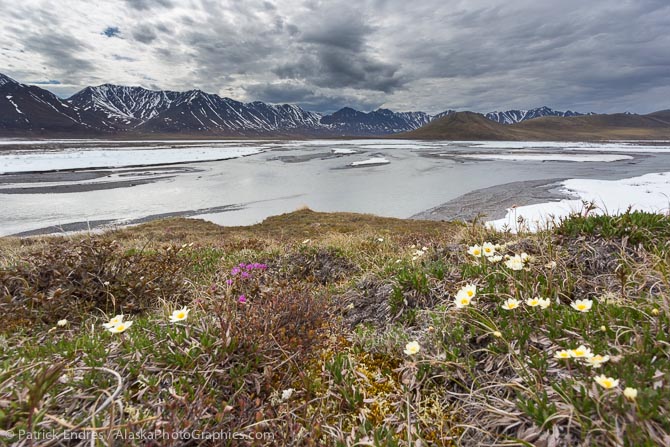
Mountain aven and lapland rosebay, the first few blooming flowers of summer in Alaska’s alpine tundra.
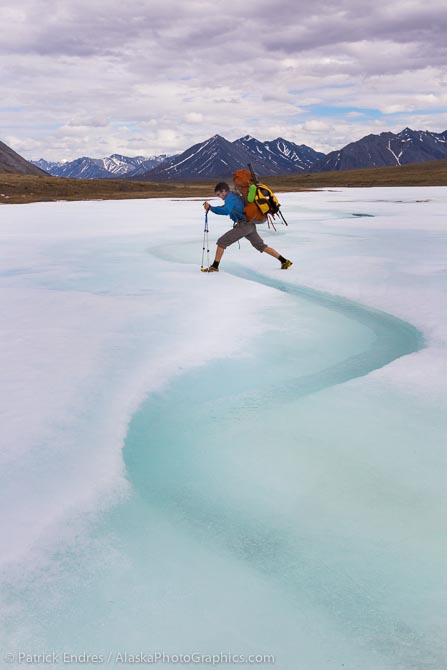
Mark jumps over one of the many melting rivulets in the river aufeis. Traveling on the ice was only sometimes preferable depending on the stability of the surface. If it was rotten and slushy, it was like walking on sand, and slow going.
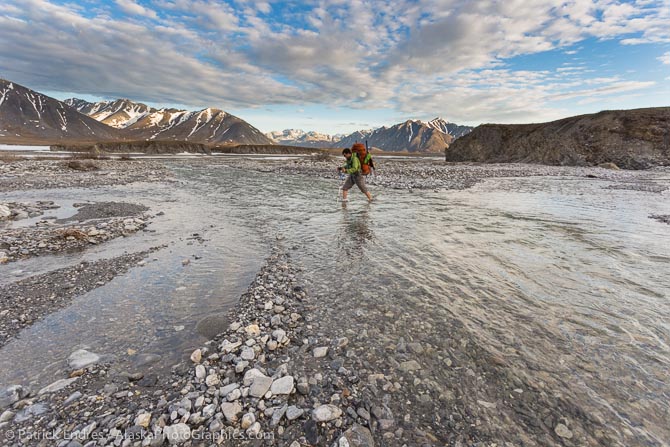
You get the idea by now, river crossing, river crossing, river crossing.
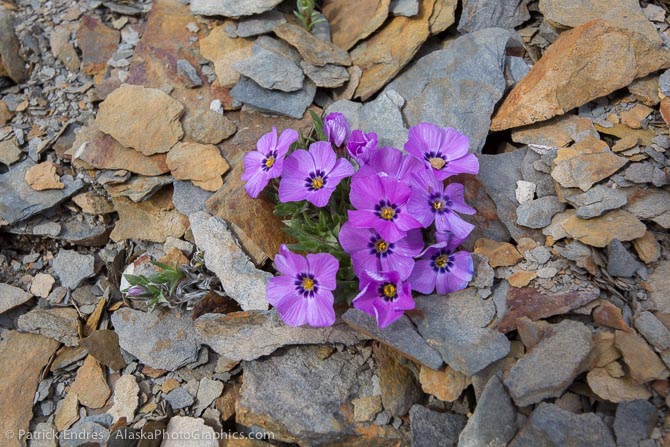
Siberian phlox wildflowers growing in the rocks.
For the most part, I was pretty happy with my gear selection, both what I brought and equally, what I chose to leave behind. However, I did not bring a tripod, which I do regret, along with a wireless remote shutter release. Those would be two items I would add to the list. I mainly wanted the tripod to stage some hiking photos with both of us, rather than only having one person in the frame. The wireless remote would allow easy image capture. All of the selfie sorts of shots were the result of balancing the camera on a rock of some sort. Well worth it in the end, but a pain.
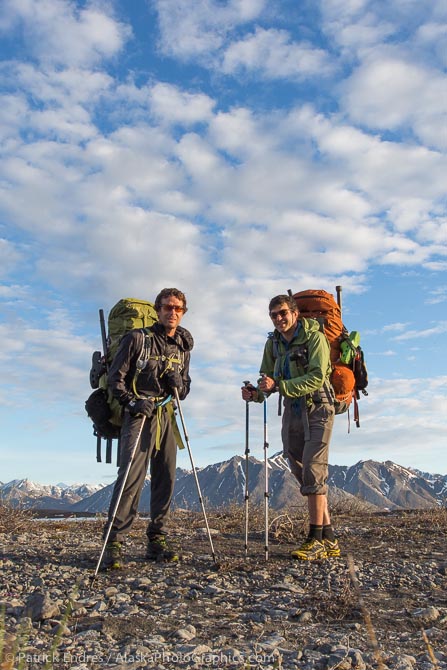
Enjoying the evening sun as day two of hiking comes to a close. Note to self, remember this sunshine, it may not always be so!
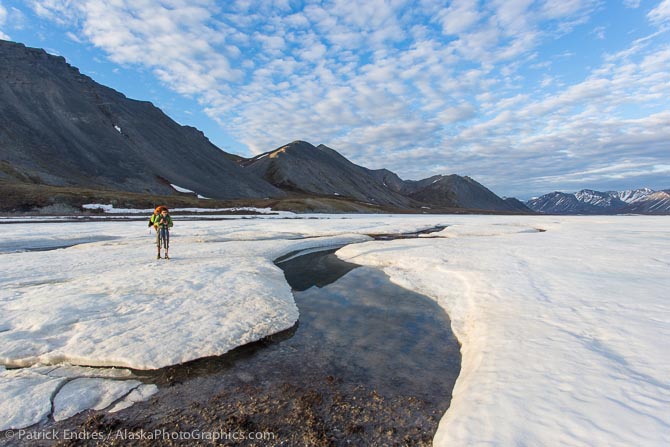
Aufeis on the Ribdon river.
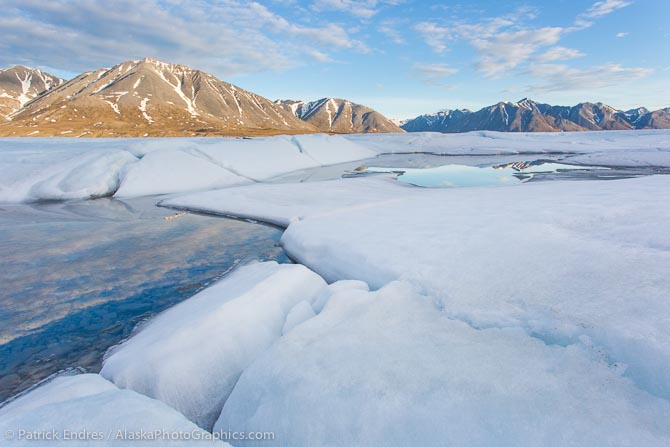
Sculpted ice along the broad and wide river valley, this scene was near the close of day 2, after 18 miles of hiking. Tomorrow, we would begin to see the braided river begin to narrow a bit.
The day finished off with a total of 18 miles. This is within our anticipated mileage for a full day of hiking. Especially since it included a river crossing by raft, along with getting cliffed off at one location along the river, which forced us to hike up and around a bluff. Stopping in the early evening to cook a hot dinner of mountain house proved beneficial for calorie resupply as well as distancing our camp location from our eating location, which is generally a good idea in bear county if one can do so. A few pesky clouds of mosquitoes collected around each of us as we traversed the tundra around the cliff. They decided to follow us along the river ice. One negative aspect of a 50 pound pack is that you can’t run fast enough to lose a cloud of mosquitos!







